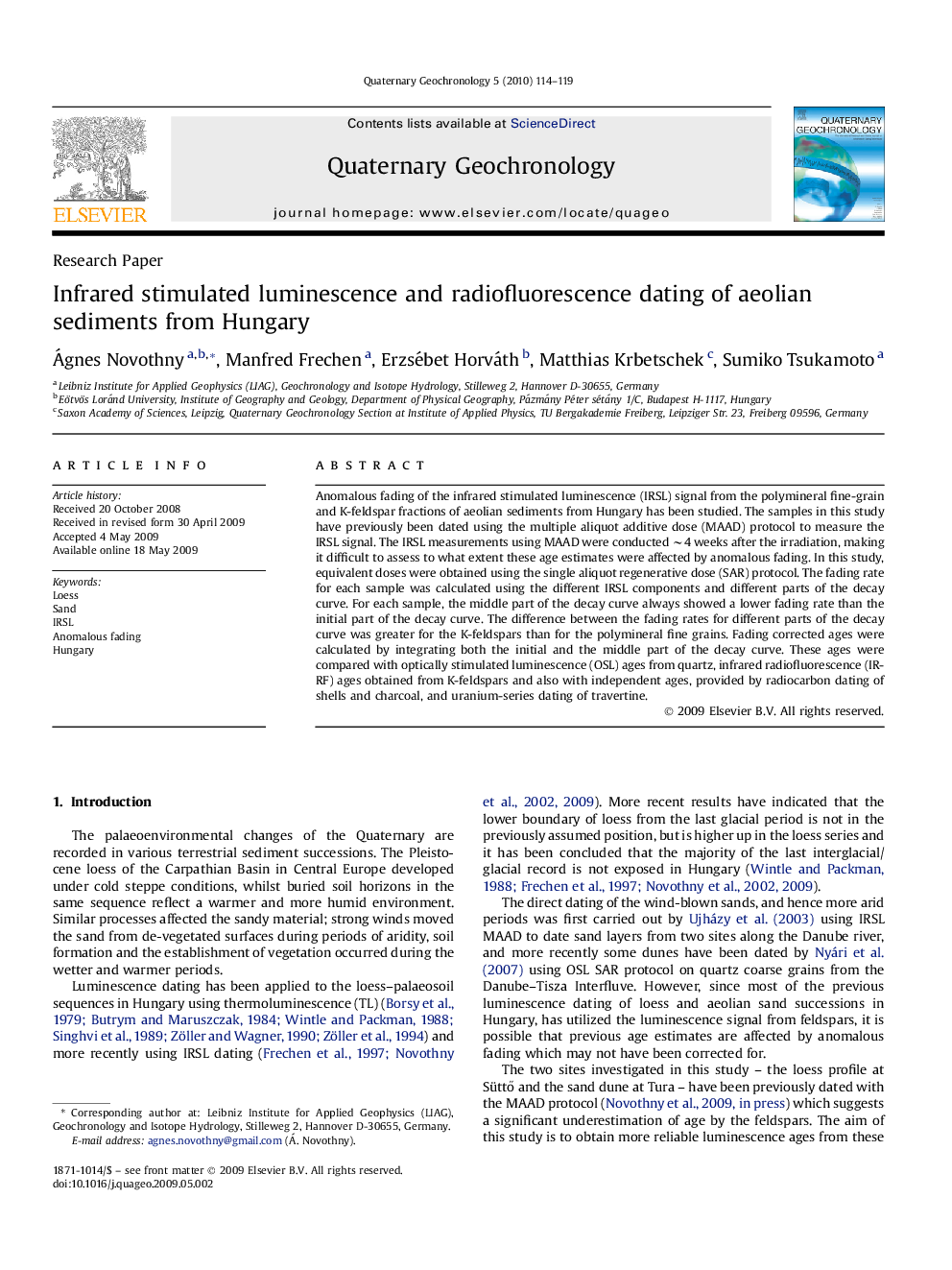| کد مقاله | کد نشریه | سال انتشار | مقاله انگلیسی | نسخه تمام متن |
|---|---|---|---|---|
| 4725498 | 1639871 | 2010 | 6 صفحه PDF | دانلود رایگان |

Anomalous fading of the infrared stimulated luminescence (IRSL) signal from the polymineral fine-grain and K-feldspar fractions of aeolian sediments from Hungary has been studied. The samples in this study have previously been dated using the multiple aliquot additive dose (MAAD) protocol to measure the IRSL signal. The IRSL measurements using MAAD were conducted ∼4 weeks after the irradiation, making it difficult to assess to what extent these age estimates were affected by anomalous fading. In this study, equivalent doses were obtained using the single aliquot regenerative dose (SAR) protocol. The fading rate for each sample was calculated using the different IRSL components and different parts of the decay curve. For each sample, the middle part of the decay curve always showed a lower fading rate than the initial part of the decay curve. The difference between the fading rates for different parts of the decay curve was greater for the K-feldspars than for the polymineral fine grains. Fading corrected ages were calculated by integrating both the initial and the middle part of the decay curve. These ages were compared with optically stimulated luminescence (OSL) ages from quartz, infrared radiofluorescence (IR-RF) ages obtained from K-feldspars and also with independent ages, provided by radiocarbon dating of shells and charcoal, and uranium-series dating of travertine.
Journal: Quaternary Geochronology - Volume 5, Issues 2–3, April–June 2010, Pages 114–119